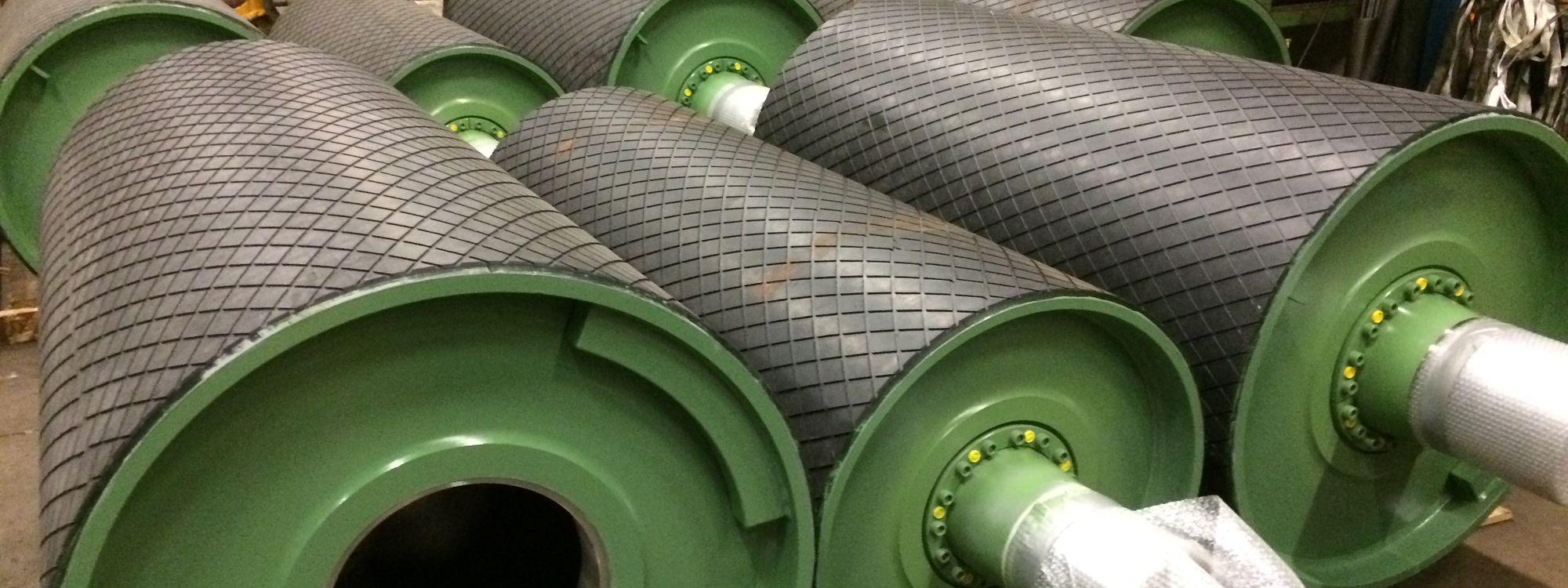Conveyor pulleys: The design
Stokman stands for high quality. How do we achieve this high quality? Of course, the application of the right technologies and the skill of our craftsmen are very important. In addition to people and technology, the materials and design of our conveyor pulleys are also essential to our quality. In this blog, we will take a closer look at some critical points in the design of our pulleys.
Stokman pulleys are known for their unique high quality
For nearly 100 years, Stokman has been known for the quality of their pulleys. The unparalleled standard of quality guarantees the very high reliability and long life of Stokman pulleys. Stokman conveyor belt pulleys reduce the risk of belt and construction damage and unplanned downtime. Stokman pulleys will lower structural maintenance costs.
The unique Stokman quality of our pulleys is based on our experience, the dimensions used and a number of critical factors in the design and assembly. In this blog, we will look at dimensions and some success factors in conveyor pulley design.
Design of Stokman pulleys
Our engineering department will design each pulley depending on application, taking into account any customer specifications. This approach can guarantee a long life.
If a pulley design is too light it may break or crack and cause great damage. High varying loads are known to break or crack pulleys.
We call this fatigue of the material. You can compare this to a paper clip that suddenly breaks after bending it several times. Each bend of the paper clip will almost invisibly crack it a little further until it breaks. Therefore, it is of great importance that our Engineering looks at all the parameters of the respective conveyor system in order to ensure the ultimately high reliability of the pulley.

The diameter and thickness of pulleys
For pulley diameters there are universal standards with 7 different diameters:
- Ø320
- Ø400
- Ø500
- Ø630
- Ø800
- Ø1000
- Ø1200
We adhere to the standards as much as possible. Where necessary we will make pulleys with a different diameter, depending on the application and customer requirements.
We can also produce pulleys made entirely of stainless steel. Each pulley is designed for its specific purpose, so the thickness of the casing and the diameter of the shaft depend on the load on the pulley. For higher loads, thicker casings can be chosen, making the pulley-body as a whole stronger and stiffer. As a result, the pulley will deform less. The thickness of the pulley shields is determined by the required clamping elements or bearings.
3 critical points in pulley design
For long-term reliable operation of your conveyor system, the pulleys are essential. When one of the pulleys fails, the conveyor belt and possibly even the entire system will fail.
Stokman stands for high quality. We are committed to provide the best materials, services and design. The design of our rollers and pulleys is to support your conveyor system.
There are 3 critical points in the design of the conveyor pulley:
- Weld connection between casing and shield
- Connection between shaft and pulley body
- Proper lining
Weld connection between casing and shield
This is perhaps the most important factor to guarantee the high standard of our pulleys. Casing and shields must be well-made and welded together. Minimum and maximum loads are calculated for each pulley in the conveyor system. In practice, the forces on the pulley are never of equal strength, they will change continuously between the minimum and maximum load. The two factors affect this are the load due to the loaded material and the rotation of the pulley.
The load on the conveyor belt is not evenly distributed due to factors such as fluctuating load volume, position of the bulk material on the belt and type of bulk material. A pulley will rotate continuously about its own axis, so the tensile forces and radial load directions are constantly changing direction. Both of these factors create a continuously varying load on the pulley.
Although not visible, any load causes deformation of the pulley. The shaft and the pulley body will deform in a different manner, due to the different shape/stiffness of the parts. This difference causes very high stress concentrations at welded joints of casing and shields. Stress concentrations may cause the welded joint to crack over time, resulting in irreparable damage to the pulley.
To inhibit these natural processes, the welding joints between casing and shield are essential. Over many years, Stokman has developed a welding process which ensures that the welded connections between casing and the shields meet the highest possible standard.

Connection between shaft and pulley body
The connection between the shaft and the pulley body is essential to the functioning of the pulley. In pulleys with external bearings, the shaft and pulley body are connected by specially manufactured clamping elements. An additional advantage of this method is that both the shaft and the pulley body can be easily replaced in the event of any damage.
Proper pulley lining
The third critical point in the production of our pulleys is the lining. For the proper operation of the pulley the lining must be very impact-resistant and must not come loose. In our workshop in Raamsdonksveer, we will process all linings in a special room in order to guarantee the quality of our pulleys in this respect.
Do you have questions about the materials of our pulleys or the possibilities for your installation? We like to provide all information you require. Why not contact us.
